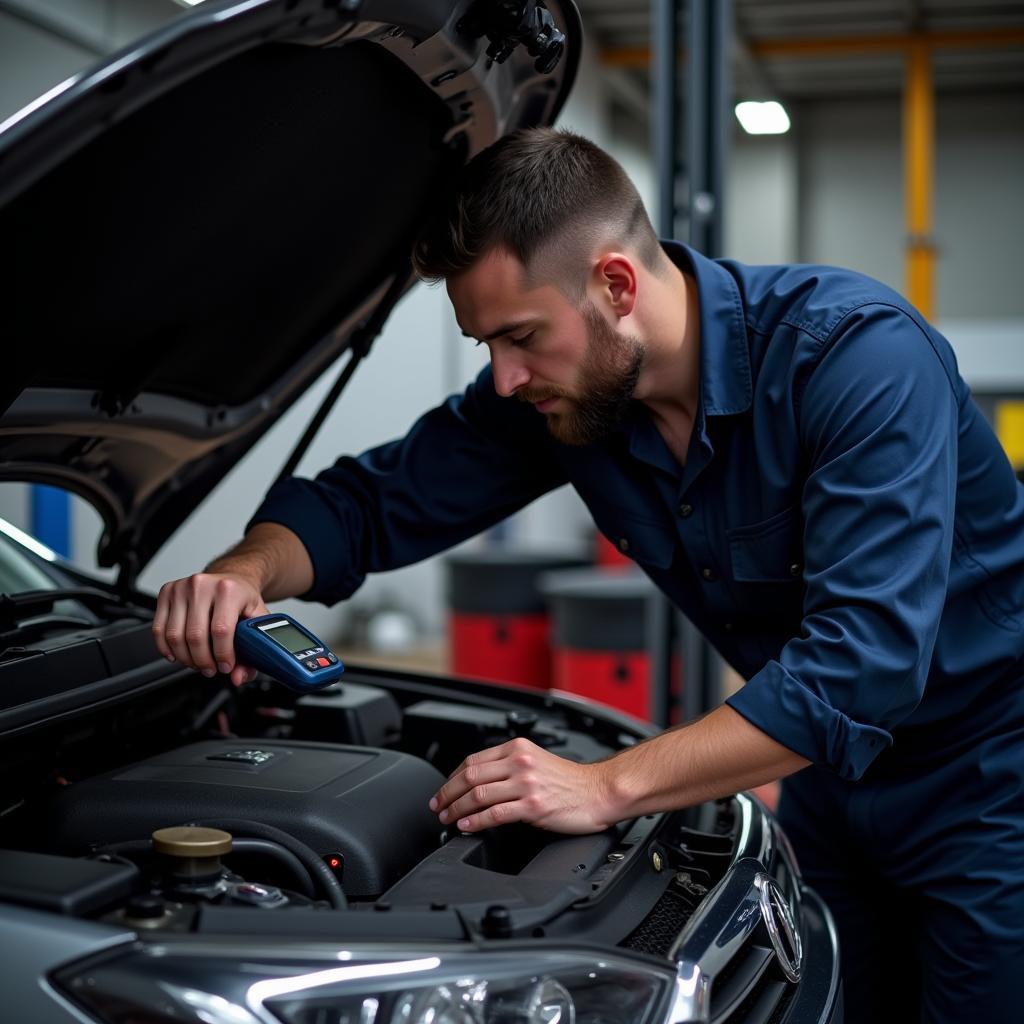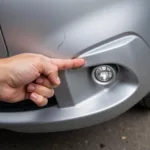Mastering the right car diagnostic strategies is crucial for efficient and effective vehicle repair. Whether you’re a seasoned mechanic or a DIY enthusiast, understanding how to properly diagnose car problems can save you time, money, and frustration. This article will delve into the essential strategies for accurate car diagnostics, equipping you with the knowledge to troubleshoot effectively and ensure your vehicle runs smoothly.
Understanding the Importance of Car Right Way Diagnostic Strategies
Accurate diagnosis is the cornerstone of effective car repair. Guesswork can lead to replacing unnecessary parts, wasting time and money. Using the right diagnostic strategies allows you to pinpoint the root cause of the problem, ensuring the correct repair is made the first time. This not only saves resources but also minimizes downtime and prevents further damage to your vehicle.
Essential Car Right Way Diagnostic Strategies
Effective car diagnostics involve a systematic approach that combines observation, logical reasoning, and the use of diagnostic tools. Here are some key strategies:
- Visual Inspection: Start with a thorough visual inspection of the vehicle. Look for obvious signs of damage, leaks, or wear and tear. Check fluid levels, belts, hoses, and wiring connections.
- Listen for Unusual Sounds: Pay attention to any unusual sounds coming from the engine or other parts of the car. Rattles, squeaks, knocks, and other noises can provide valuable clues about the source of the problem.
- Check Warning Lights: Don’t ignore those dashboard warning lights. They are designed to alert you to potential problems with various systems, such as the engine, transmission, brakes, or airbags.
 Visual Inspection and Check Engine Light
Visual Inspection and Check Engine Light
- Use Diagnostic Tools: Modern vehicles are equipped with sophisticated onboard diagnostic systems (OBD). An OBD scanner can retrieve diagnostic trouble codes (DTCs) that provide valuable insights into the nature and location of the problem.
- Consult Repair Manuals: Refer to the vehicle’s repair manual for specific diagnostic procedures and troubleshooting information. These manuals provide detailed diagrams, wiring schematics, and component locations.
- Systematic Troubleshooting: Follow a logical troubleshooting process, starting with the most likely causes and working your way through the possibilities. This helps eliminate potential issues and narrow down the source of the problem.
- Verify Repairs: Once a repair is made, verify that the problem has been resolved by testing the vehicle and rechecking the diagnostic codes. This ensures that the repair was effective and that no further issues exist.
Advanced Car Right Way Diagnostic Strategies
For more complex problems, advanced diagnostic strategies may be required. These include:
- Data Logging: Using specialized software and hardware, data logging allows you to monitor various vehicle parameters in real-time, providing a detailed picture of how the systems are performing.
- Oscilloscope Analysis: An oscilloscope can be used to analyze electrical signals and identify intermittent faults that may not be detectable with other diagnostic methods.
- Pressure Testing: Pressure testing is used to identify leaks in various systems, such as the cooling system, fuel system, and intake manifold.
Why Choose the Right Diagnostic Strategy Matters
Choosing the correct car right way diagnostic strategy is critical for several reasons:
- Cost Savings: Accurate diagnosis leads to targeted repairs, preventing unnecessary part replacements and saving you money.
- Time Efficiency: Efficient diagnostics minimize downtime and get your vehicle back on the road quickly.
- Prevent Further Damage: Addressing the root cause of the problem prevents further damage to your vehicle and ensures its longevity.
What are the Most Common Car Diagnostic Mistakes?
- Ignoring Warning Signs: Ignoring warning lights or unusual noises can lead to more serious problems down the line.
- Jumping to Conclusions: Don’t assume you know the problem without proper diagnosis. Guesswork can be costly and ineffective.
- Not Using the Right Tools: Invest in quality diagnostic tools and learn how to use them effectively.
Conclusion
Employing the right car right way diagnostic strategies is crucial for efficient and effective car repair. By combining observation, logical reasoning, and the use of diagnostic tools, you can accurately pinpoint the root cause of car problems, save time and money, and keep your vehicle running smoothly. Remember to consult reliable resources and seek professional help when needed.
FAQ
- What is an OBD scanner?
- How do I interpret diagnostic trouble codes?
- What are some common causes of check engine light illumination?
- How often should I perform a visual inspection of my vehicle?
- What are the benefits of using a professional car diagnostic service?
- What are some common car diagnostic tools?
- How can I improve my car diagnostic skills?
Need help? Contact us via WhatsApp: +1(641)206-8880, or Email: [email protected]. Our customer support team is available 24/7. We’re here to assist you with all your car diagnostic needs.


